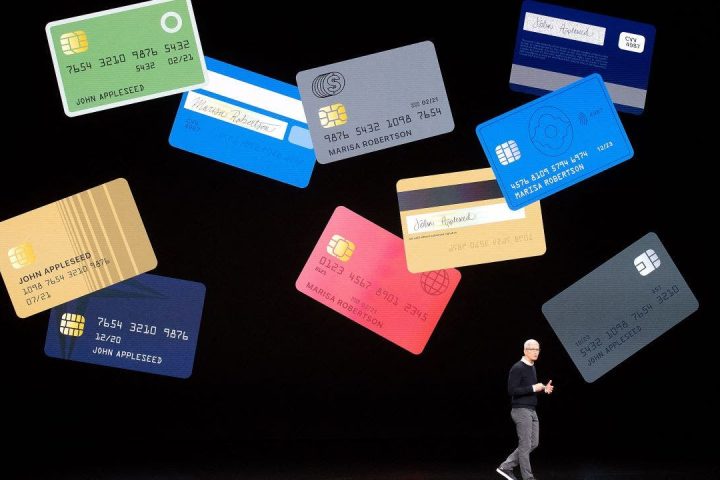Credit card balances hit a new benchmark in the fourth quarter of 2023, with balances topping the $1 trillion mark for the first time, according to a recent TransUnion report.
Balances increased by 13% over the previous year across all risk tiers, led by subprime, which grew 32% to $105 billion, the report said. Even as interest rates soared, the average balance grew to $6,360.
The Federal Reserve has raised interest rates 11 times since 2022 to lower sky-high inflation to a 2% target rate. Now that inflation has moderated some, the Fed has slowed rate hikes, but its restrictive monetary policy has pushed credit card interest rates north of 27%.
While Americans were busy charging on their cards, they also increased their unsecured personal loan balances in the fourth quarter. Overall personal origination balances topped $245 billion compared to $222 billion the previous year. The surge in personal loan debt comes despite originations dipping slightly as lenders continue to tighten borrowing criteria.
“If the expected Fed interest rate cuts over the course of 2024 take place, lenders may find opportunity as consumers carrying elevated card balances seek to lower their monthly payments by refinancing high-cost debt into a lower interest product,” Michele Raneri, TransUnion vice president of U.S. research and consulting, said. “Consumers should know their credit scores and work to improve them where possible. This will ensure they are as well-positioned as they can be to take advantage of those lower rates if the opportunity arises.”
Personal loans can offer consumers lower-interest options to refinance high-cost credit card debt. If you’re interested in paying off high-interest debt with a personal loan, you could visit the Credible marketplace to learn more about your options and speak with an expert to get your questions answered.
SOCIAL SECURITY: COLA INCREASING BUT MEDICARE COSTS RISING TOO IN 2024
Credit card lenders target prime borrowers
While balances surged, bank card originations actually declined in the fourth quarter to 20.1 million from 21.6 million the previous year, according to TransUnion. Still, the average new account credit line increased to nearly $5,700 from just over $5,200.
Most originations occurred among the borrowers in the super prime risk tier, followed closely by prime borrowers. Millennials led the way in the share of originations, accounting for nearly 30%, and beat out Baby Boomers for the first time.
“A pullback in non-prime issuance was a primary driver in the (year-over-year) decline in (third quarter) 2023 originations and breaks the historical seasonal pattern,” Paul Siegfried, TransUnion senior vice president and credit card business leader, said. “While delinquencies in Q4 2023 were elevated, they were in line with the expected forecasts given historic non-prime originations and balance growth. We will be carefully watching to see if typical seasonal patterns will return based on liquidity events such as tax returns and annual wage growth.”
If you’re worried about high-interest debt, you could consider paying it off with a personal loan at a lower rate to reduce your monthly payments. Visit Credible to get your personalized rate in minutes.
AMERICANS LIVING PAYCHECK TO PAYCHECK OWN 60% OF CREDIT CARD DEBT: SURVEY
Credit card debt derails saving goals
Consumers’ growing debt burden means they have less cushion for emergencies and fewer funds to put away in savings, according to a recent Quicken survey.
Fifty-four percent of middle-class Americans and 56% of younger Americans said their current savings wouldn’t last over three months if they were to lose their source of income. Middle-class Americans aren’t the only ones feeling the impact of growing debt, according to the survey. Over one quarter (28%) of those making over $200,000 a year said their savings would last only three months if they were to lose their source of income. Financial experts recommend that consumers have roughly three to six months’ worth of living expenses in emergency savings, but inflation and rising costs have made this target a challenge.
Inflation and rising costs were listed as the top financial concerns for over 50% of respondents and the most significant reason Americans cannot build savings in a recent TaxAct survey. This concern has even impacted Americans in higher tax brackets – 55% of consumers with household incomes between $50,000 and $99,999 also cited inflation as their top financial worry, the survey said.
If you are struggling to pay off debt, you could consider using a personal loan to consolidate your payments at a lower interest rate, saving you money each month. You can visit Credible to find your personalized interest rate without affecting your credit score.
SECURE 2.0: OPTIONAL PROVISIONS KICK IN TO HELP RETIREMENT SAVERS WITH EMERGENCIES AND STUDENT LOAN DEBT
Have a finance-related question, but don’t know who to ask? Email The Credible Money Expert at [email protected] and your question might be answered by Credible in our Money Expert column.
Read the full article here







